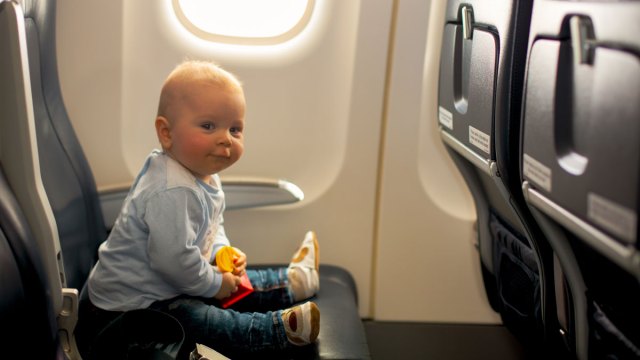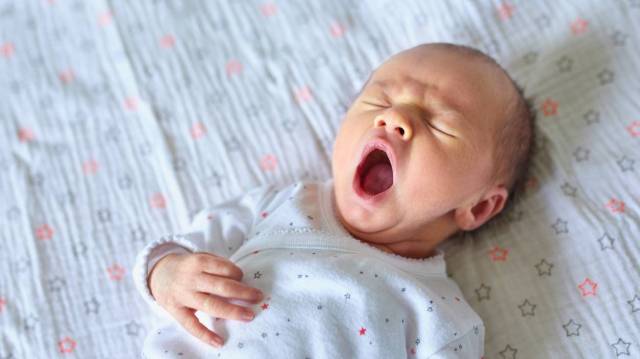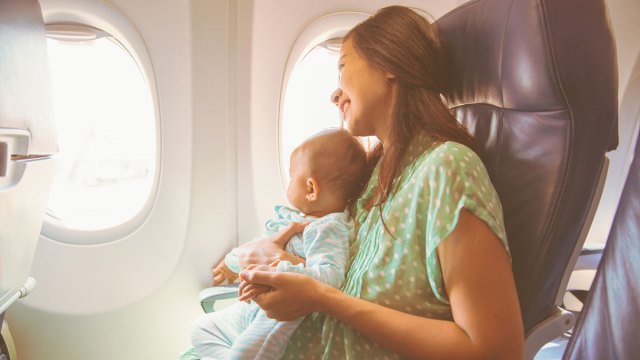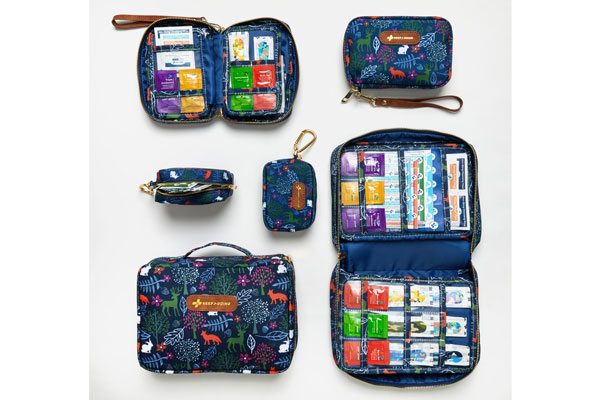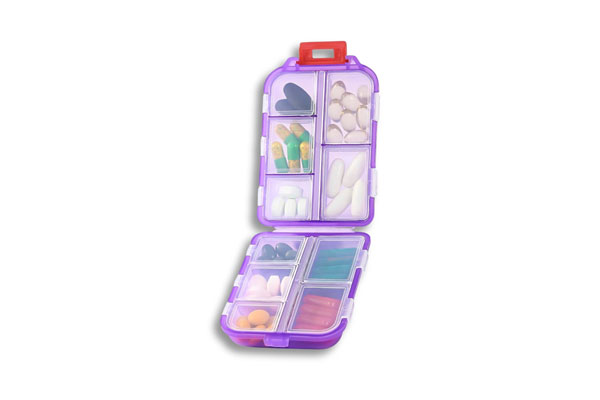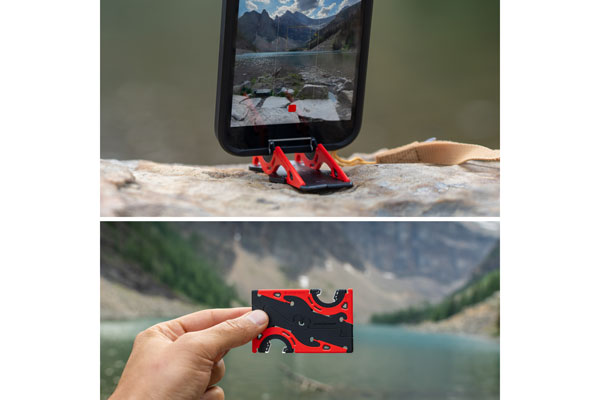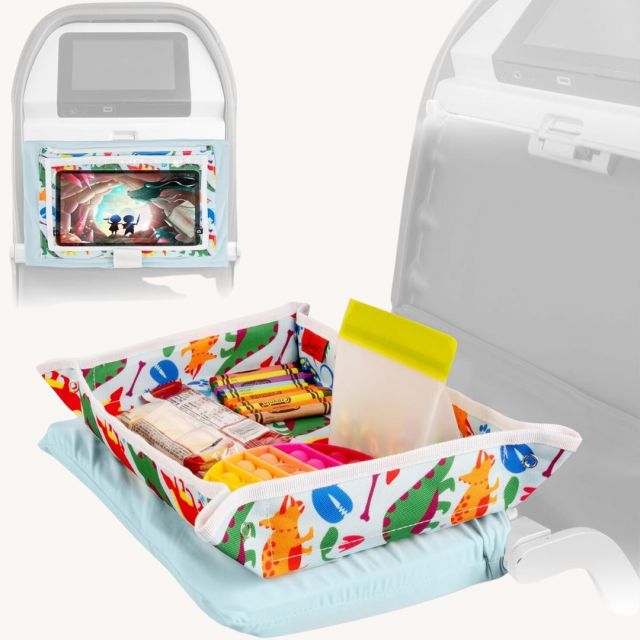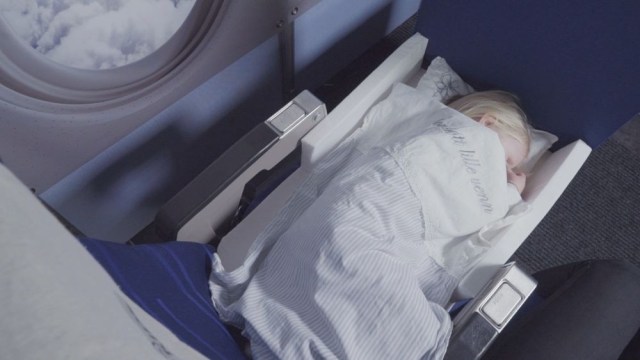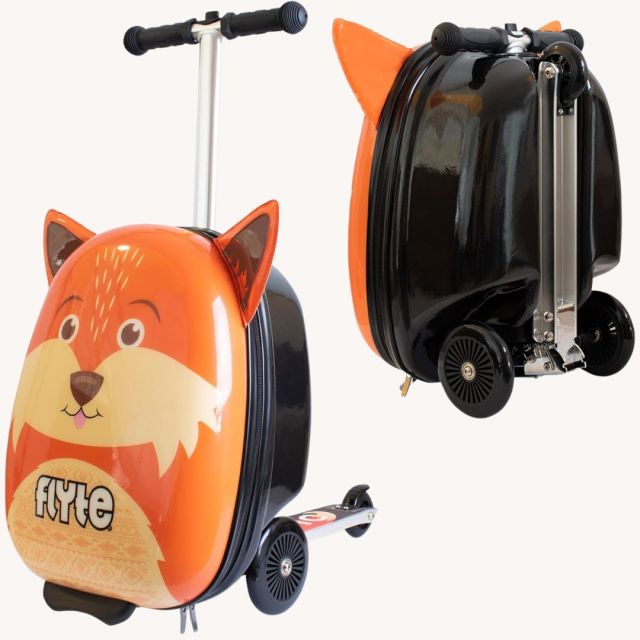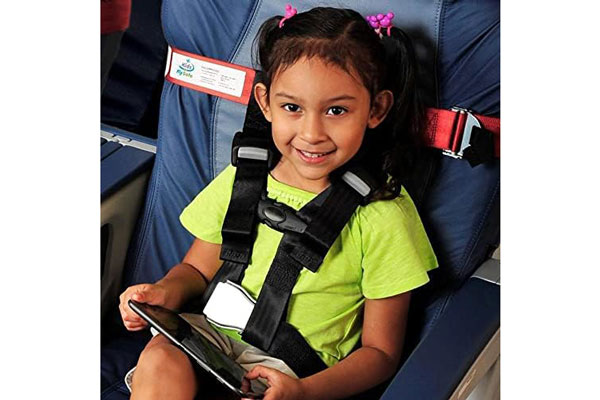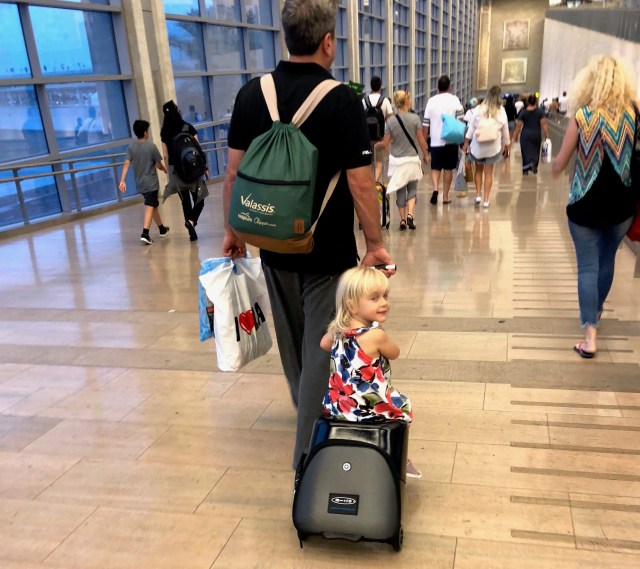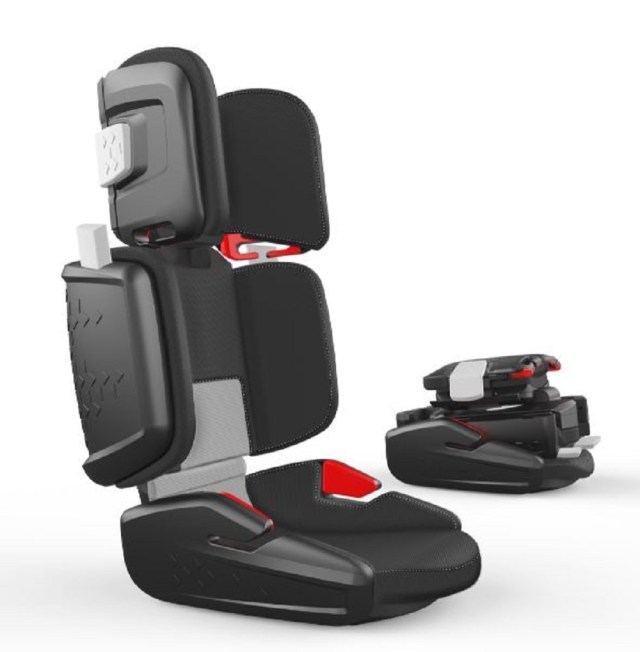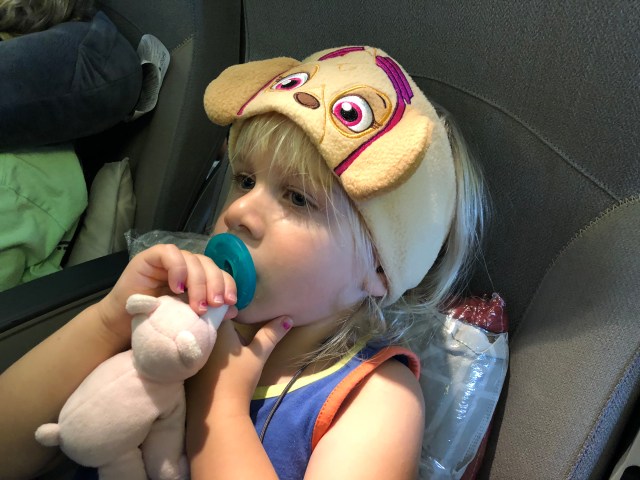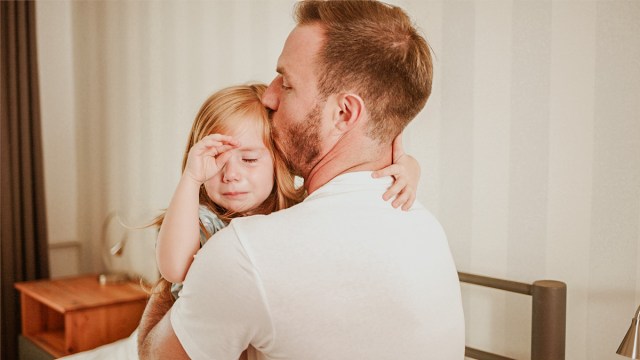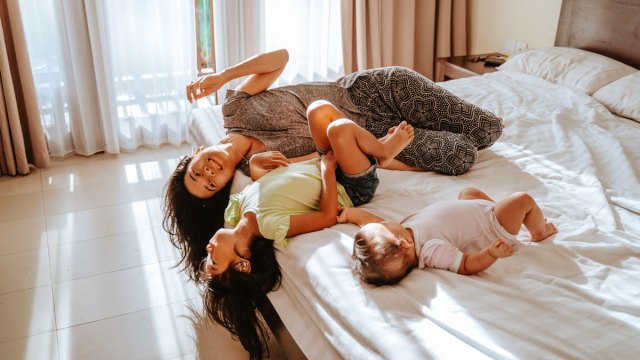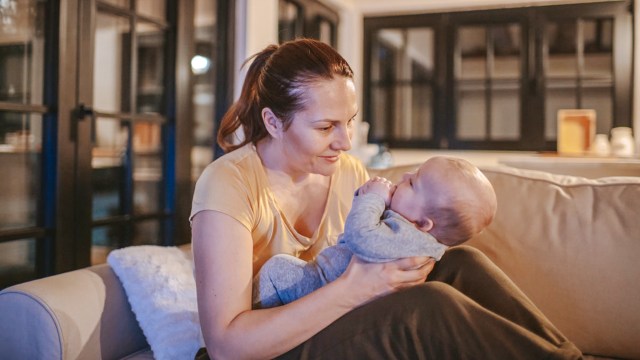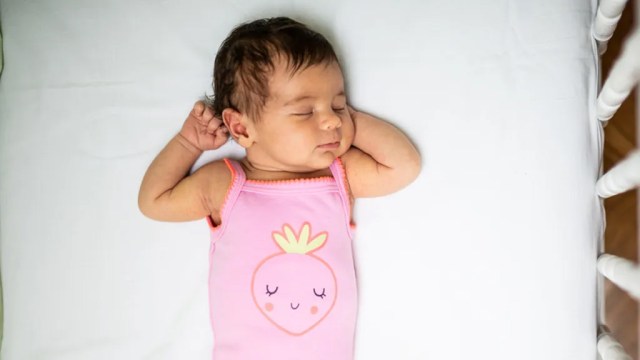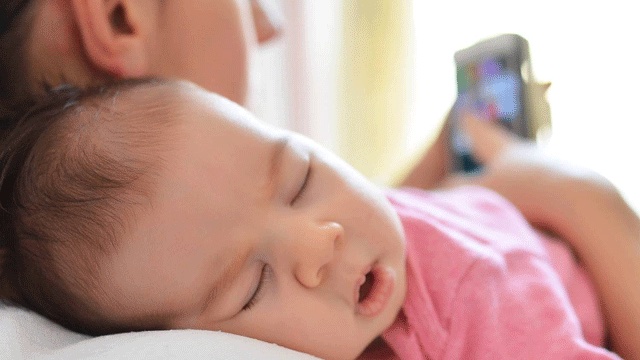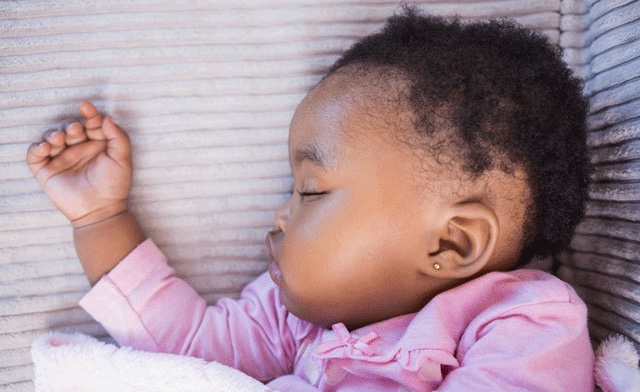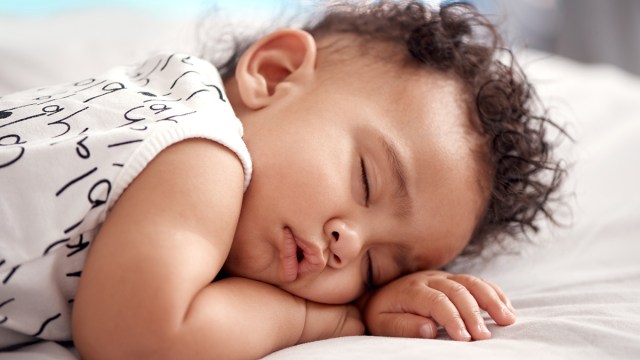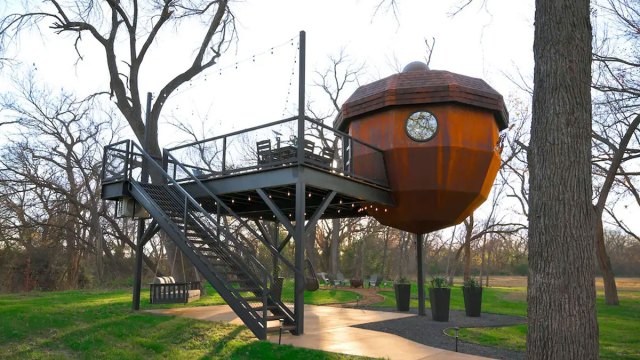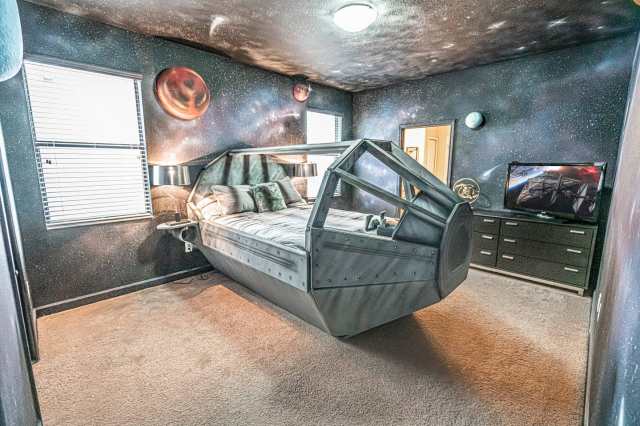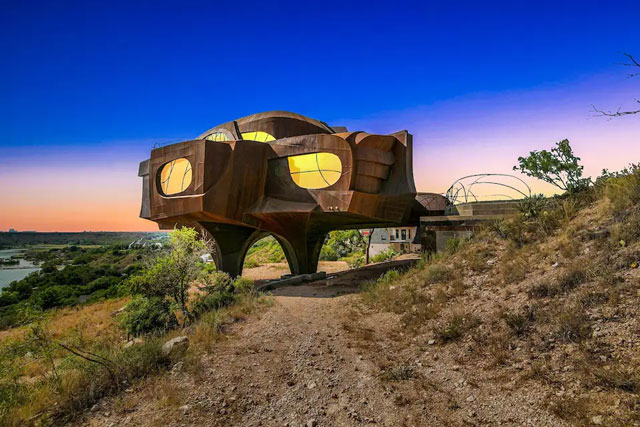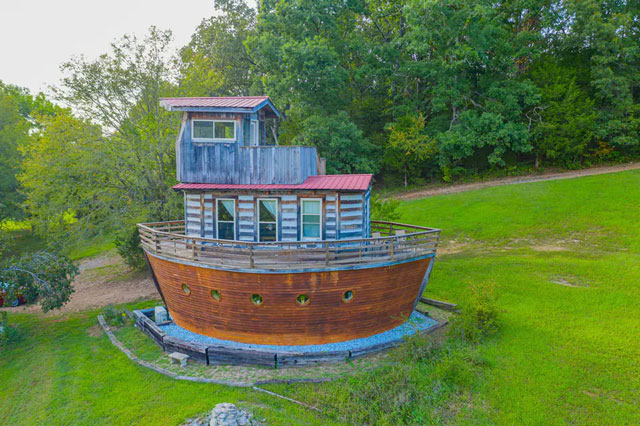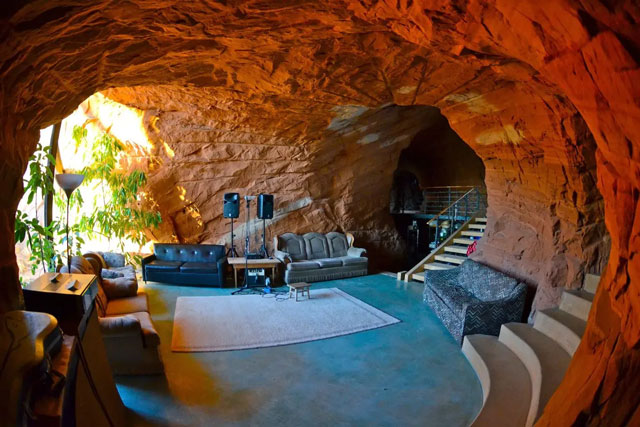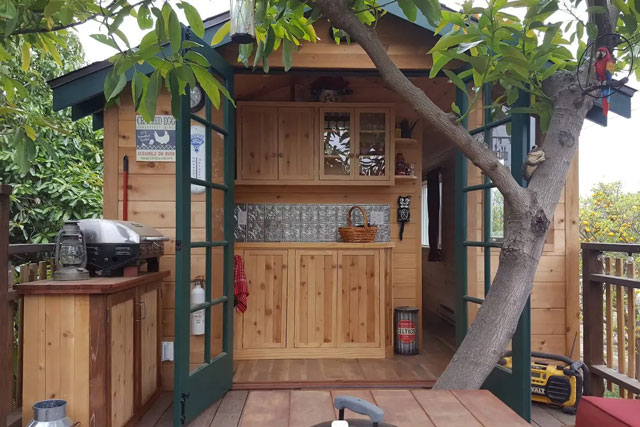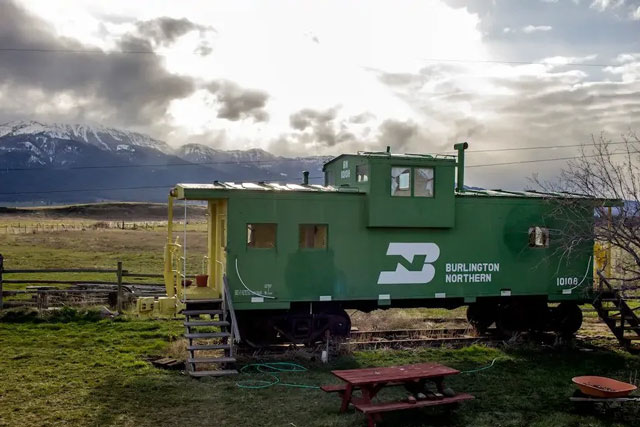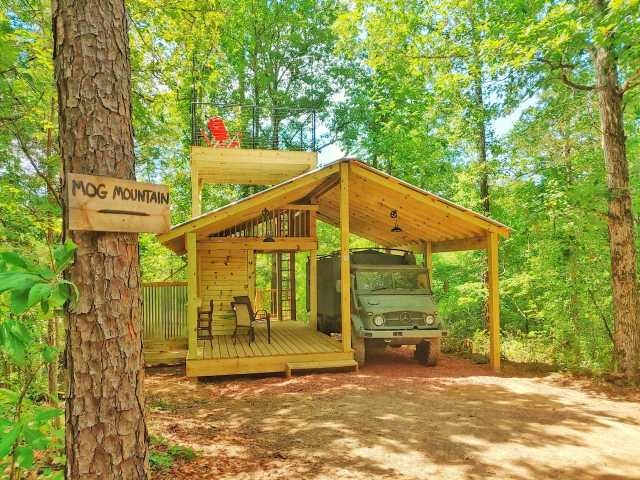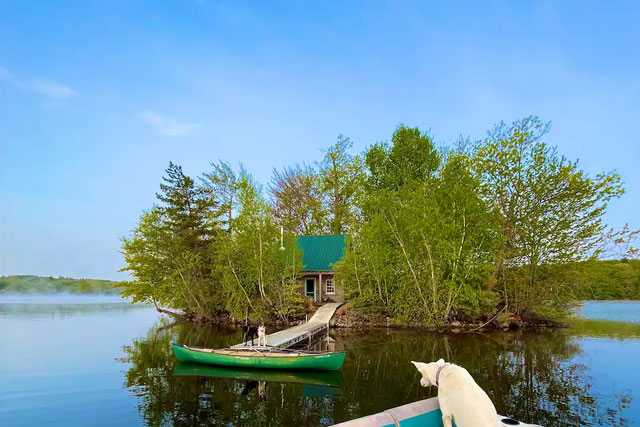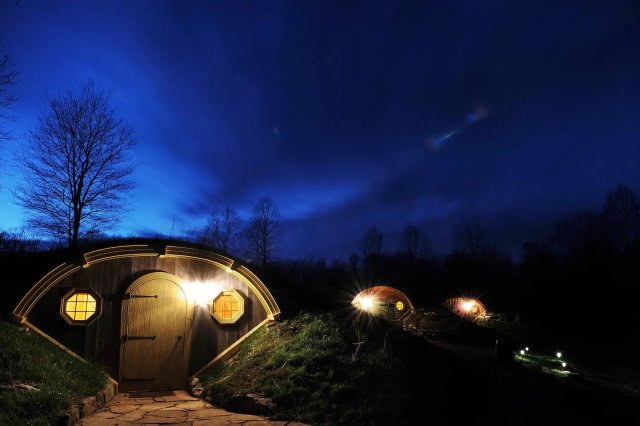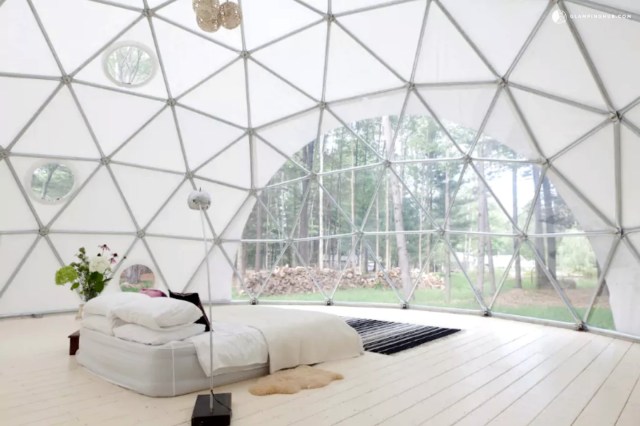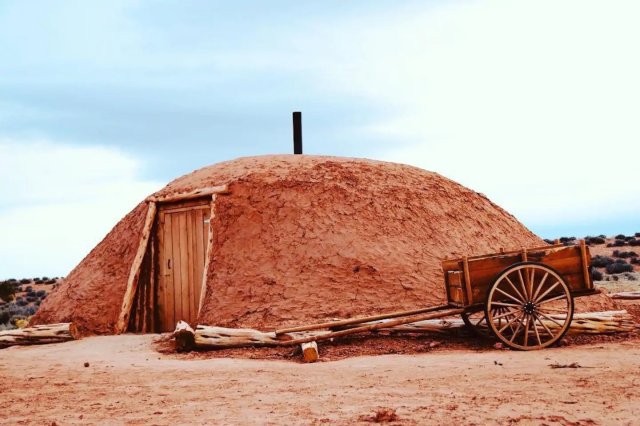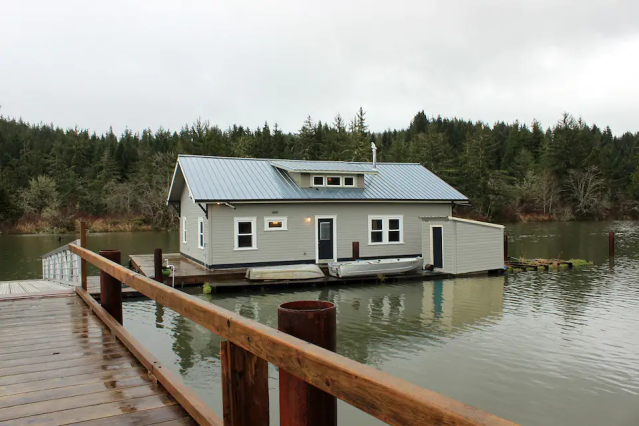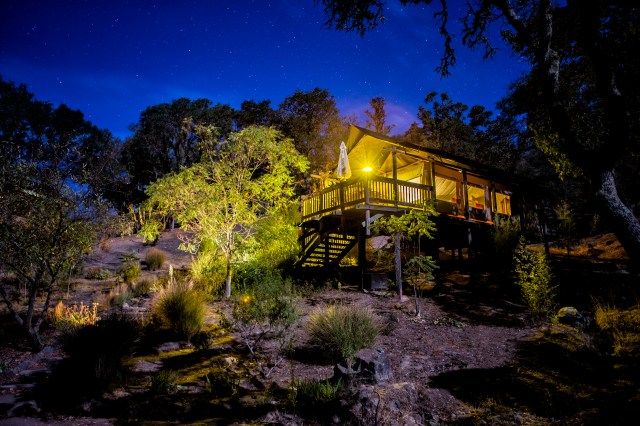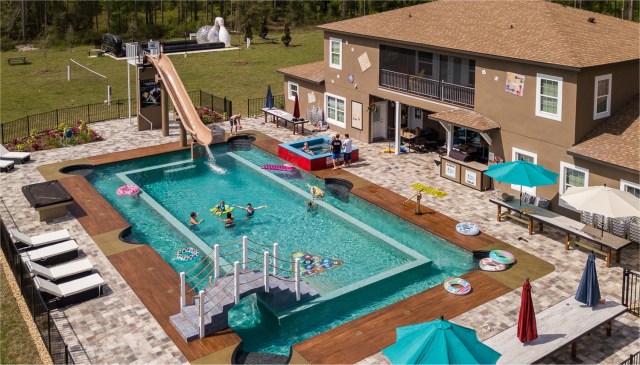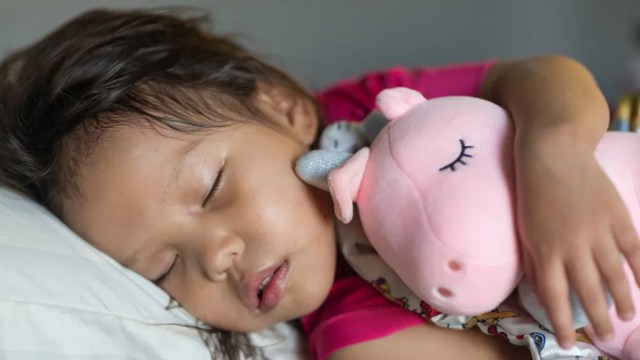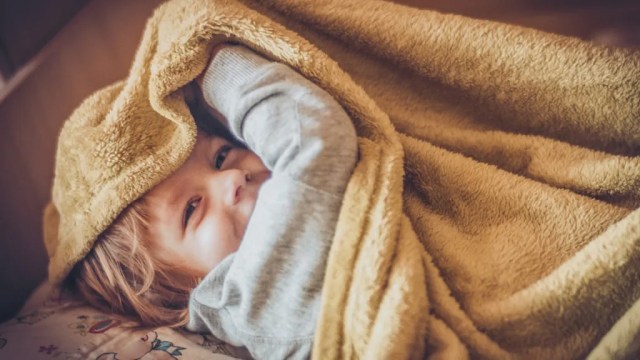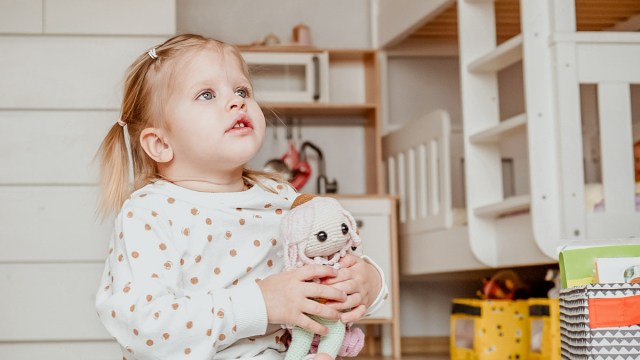You’re excited about your destination. The journey to get there—maybe not so much. But before you start writing preemptive apology letters to your fellow airplane passengers, try some of these genius airplane hacks to keep your brood calm, happy, and organized on even thelongest of flights. From where to sit on the plane to how to pack so you can whip out the right stuff at the right time (Hello, emergency lollipops!), here are the best travel and packing tips for your next flight.
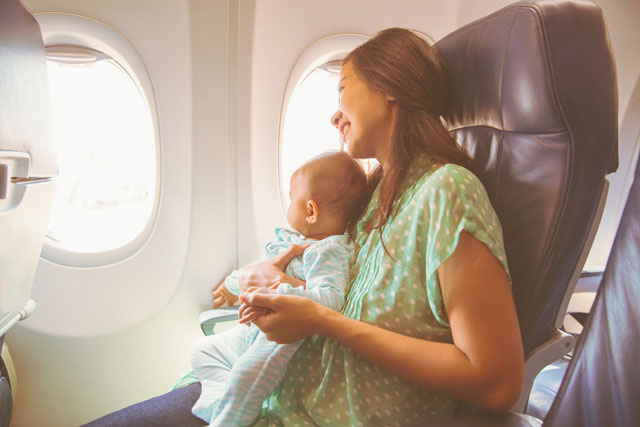
1. Get TSA PreCheck status to breeze through security. True, some airports will whisk families through security to help weary moms and dads get through the lines without having to tame tantrums or retrieve runaway kiddos—but it’s not a guarantee. To help make sure your wait in the security line is a quick one, apply for TSA PreCheck status, which lets you and your kids breeze through security a little faster (PreChecked travelers use a separate line and don’t need to remove their shoes or belts nor remove liquids, laptops or light jackets). Children under 13 can use the TSA PreCheck lane when traveling with a parent or guardian who has the indicator on their boarding pass. Even better? It only costs $85 for five years.
Insider Tip: Make sure to apply for PreCheck status at least two weeks before your flight, then add your “Known Traveler Number” to your reservation.
Apply at Tsa.gov/precheck
2. Fly on a Tuesday or Wednesday. According to air travel experts, Tuesdays and Wednesdays are the least popular days to fly—which means not only could you get a better deal on your flight, but you may end up with a free seat next to you in the air. In contrast, Sundays are the most expensive, according to TravelFreak.com.
Related: Easy Travel with Kids? The Solution We Can’t Stop Talking About
3. Pre-order meals and snacks. Every parent knows it takes something as simple as, “Sorry, we ran out of the Pirate’s Booty” to send a cranky kid into a hangry downward spiral. To avoid this in-air calamity, pre-order any onboard snacks (besides the ones you pack) ahead of time. Most airlines will let you do this within two weeks of your flight, allowing you to prepay for meals or snacks so that you’re guaranteed your food of choice even if you’re sitting in the last row to be served (most airlines even have kids meals, which reportedly taste way better than their grown-up counterparts).
Not all airlines have specialized child or baby meals available, but many do—including Delta, American, United, British Airways, Emirates, EVA Air, Virgin Australia, Virgin Atlantic, Lufthansa, and Japan Airlines. Specialized meals (there are also allergy-friendly meals, vegetarian meals, etc.) are only available by reservation, so make sure to check with your airline long before your flight takes off.
Insider Tip: To reserve meals, go to the “Manage My Booking” section for your flight and find the option for meals and snacks.
4. Sit up front if you’re worried about motion sickness—and the back if you’re potty training. If you’ve got a kid who gets queasy easily, sitting at the front of the plane or between the wings is your best bet since this is the most stable part of the airplane. The back seats, by contrast, will be the bumpiest when the air gets choppy. That said, if you’ve got a kid who’s new to the potty, choose a seat in the back, so you’re close to the lavatory. Sitting in the rear of the aircraft also means you’re within easy reach of in-flight amenities (you can usually get cups of water or seconds on snacks), and you’ll have a bit of room to stretch your legs if you need to rock a nearly-snoozing child.
5. Use packing cubes to grab-and-go. When your wiggly tot needs to get to the bathroom, pronto, digging through your carry-on to find diapers and wipes need to be a lightning-fast feat. To prep for this inevitable moment, use a clear packing cube to make an easy-to-grab potty kit that you can whisk out of your carry-on the moment you see your wee one wiggling. Packing cubes are also great for separating snacks, spare clothes, toys, and other items you’ll need to grab at a moment’s notice. Try these EZPacking Cubes for clear plastic pouches or these compression mesh cubes that let you squish your stuff down to fit it all in.
Insider Tip: Bring extra Ziploc bags in case you need a place to put soiled or wet clothes.
6. Use a blow-up footrest to make naps happen. This blow-up footrest lets your little ones lay flat (if they’re small enough) or put their feet up to get cozy. It also works to keep toys and crayons from falling to the floor since it takes up almost all of the space in front of the seat. Blowing it up can be a little tedious—you use your mouth or a pump (sold separately)—but once it’s inflated, your tot will be the envy of your seatmates. Buy it here.
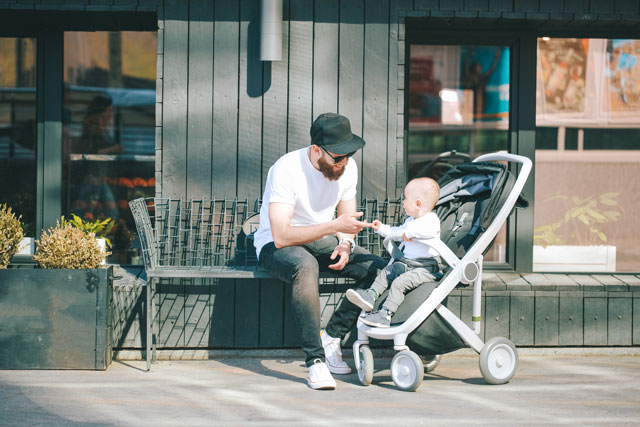
7. Use a phone wallet for easy access to travel documents and credit cards. When you’re shuffling kids through security, keeping all of your travel documents easily accessible is a must. So carry your phone and your credit cards in one of these wearable “phone wallets” so you can whip out your tickets and pay for snacks without needing to open your purse. Not only that, but you’ll be able to quickly snap a photo or hand over Youtube Kids at a moment’s notice. Win-win!
8. Use busy boxes to keep kids entertained without screens. Sure, you can hand over your phone and let kids veg out the whole flight, but if your kids are too young for marathon TV sessions or you want to occupy them for a few minutes without a screen—airplane busy boxes are a fun way to pass the time. Make them yourself by filling a pencil case with a variety of small toys and games suitable for your child, or head to Etsy and buy one, made-to-order. Stellar seller 2Plus3EqualsWe makes magical ones that can be personalized with your child’s name.
Insider Tip: Don’t show them to your kids until you’re up in the air!
9. “Surprise Eggs” are your friends. If the wild success of YouTube channels like Ryan’s World is any indication, simply opening a toy is almost more fun than playing with it. So bring along wrapped or boxed toys that your child can “unbox” while in flight. It can be as simple as filling plastic Easter eggs with tiny toys from the Dollar Store or buying pre-made kits online, like this 30 toy-filled eggs set on Amazon. Our choice: “Surprise Balls” like Mini Brands Toys (which come with tiny replicas of popular toys and are gender-neutral) take at least 15-20 minutes to unwrap, open, and explore, and they’re relatively small to toss in your carry-on. Keep them a secret, then hand them over when your kids get fidgety.
Insider Tip: Bring Play-Doh for kids to stick to the tray table—it works great for anchoring small toys in place!
10. Listen to Stories. There are only so many books you can bring to read to your child on a plane. So leave the storytelling to this genius little gadget that makes it easy for kids to listen to stories or songs without needing to know how to read the controls. All they have to do is slide the sturdy story card into the slot and push a button. Content cards range from Disney faves like Frozen and Spider-Man to kid-lit classics like The Magic Treehouse and Ramona Quimby. There are even cards that let you record your voice so you can read a story, sing a song, or just talk to your child and they can listen to your voice on demand.
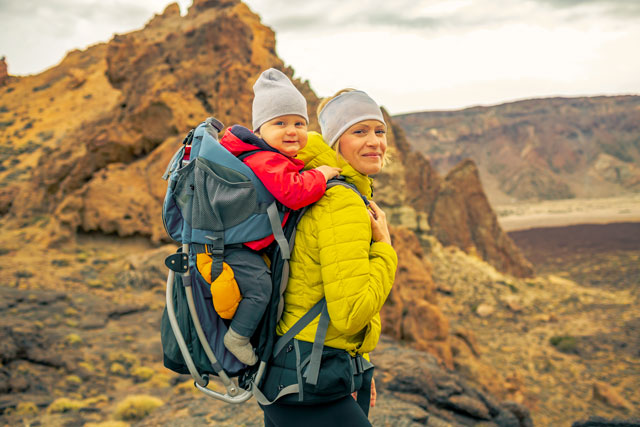
11. Bring triangular crayons. Coloring is a no-brainer way to help pass the time on a long flight. To keep crayons from slipping and sliding off of the fold-down tray, bring triangle-shaped ones that will lay flat.
12. Tether important toys. Your kid won’t travel without her favorite lovey, but you know that doll is bound to end up on the dirty airplane floor. What’s a parent to do? Strap one of these handy tethers onto your kids’ important items to keep them from falling onto the ground (or getting lost). Note: You can attach one end to your child’s wrist (or yours) if you can’t find any other place to loop it.
13. Check the car seat. Don’t feel like lugging your toddler’s car seat but need something more than the airplane seatbelt to keep your little wiggler in place? Try this airplane hack that uses a safety harness that straps onto the airplane seat to create the same sort of five-point harness your child is used to, without the bulk. Because it holds the child’s chest area as well as the waist—the same way a car seat seatbelt does—the FlySafe harness can help restless kids fall asleep more easily on a plane. It is designed for kids that weigh 22-44 pounds and is small enough to fit in your purse.
14. Use a folding travel desk to keep things within reach. If your child likes to draw or craft her way through a long flight, a fold-out desk like this one is the perfect way to keep all those art supplies within reach and off the airplane floor. There are pockets for all the things your child needs, and it folds up easily for easy carrying to and from your destination. It also works to cover that infamously dirty tray table.
15. Roll your child through the airport. When you’re rushing to make a flight and you don’t want to worry about your child toddling into restricted areas or making a beeline for the airport store, this strap-on child seat fits on the back of your rolling luggage and lets your kid cruise right along with your carry-on. It works with children up to 50 pounds and attaches to any 20-24″ rolling suitcase. Want something a little more sophisticated? Micro’s Luggage Eazy has a built-in kid seat on the top of its roller case so you can zip through the terminal in style.
16. Get a seat with a bassinet for long-haul flights. Did you know most international flights offer bassinets that attach to the wall of the front row in coach? It’s true… and it’s amazing! To secure one of the few seats on the plane that offer this perk, book your seats way ahead of time by calling the airline directly and requesting the bassinet seats. The bassinets make a great napping and tummy time space and are available for babies up to about a year (though age and weight limits vary per airline). Check out this post from FlyingwithaBaby, which compares bassinet seats (and rules for them) for almost all major airlines.
17. Bring pain relief, just in case. The last thing you want when you’ve just reached cruising altitude is to hear the sad wail from your little one that can only mean one thing: something hurts. To help any in-flight ouchies (such as ear pain, which is common during the winter when kids have constant stuffiness), bring a bottle of infant or child Tylenol or Advil (plus the measuring cup that comes with it), just in case.
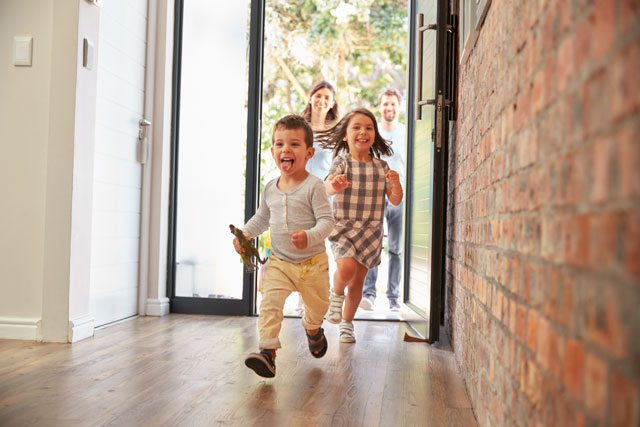
18. Use disposable mats on airplane trays. You don’t want to know what might be lurking on the tray table where your one-year-old just plopped his pacifier. One of our favorite airline hacks is to keep those yuckies covered with a disposable like this “Tray Mask.” That way, when your kids pour their pretzels out of the bags (because you know they will), you can rest assured knowing the table is clean.
19, Stash pacifiers in condiment cups. If you don’t want your extra pacifiers collecting dirt and grime, grab a few extra to-go dressing cups the next time you eat out. Each one is a perfect binky-holder.
20. Get this suitcase that doubles as a lay-flat bed. JetKids has invented what may be the coolest travel gadget for kids: The JetKids By Stokke Bedbox works as a scooter suitcase in the airport (your kids can roll themselves or be pulled by you) and transforms into a lay-flat bed for babies and toddlers in-flight. At $199, it’s a pricey purchase, but considering the peace of mind you’ll get knowing your little one will snooze the flight away, it may be worth it. Read our in-depth review of the BedBox here.
Related: The Ultimate Guide to Flying with a Baby
21. Use free printables. If the power on the tablet runs out, and you’re up for a family game, whip out a few air travel BINGO cards and start scanning the aisles for your winning items. See a beverage cart? Check!! Hear someone sneeze? BINGO! You can make your own cards or try one of these free printables.
22. Conquer achy ears. The frequent flyers over at Nourishing Little Souls picked up this hack from a flight attendant for when their little ones’ ears pop en route. Simply pour steaming hot water onto paper towels and stuff them into the bottom of two cups. Then, hold the cups so that they’re sealed over your kid’s ears; any pressure disappears in a flash.
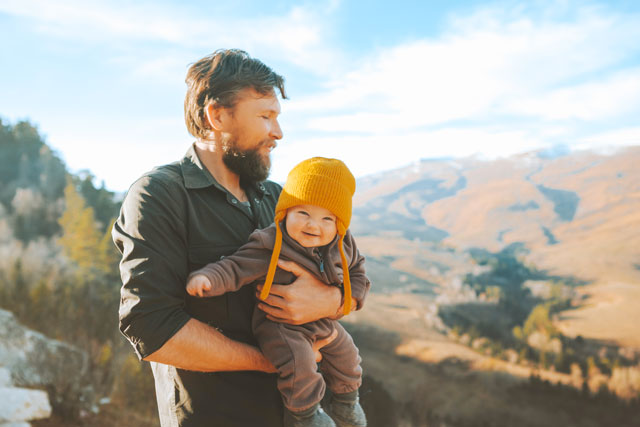
23. Make in-flight snack time a game. Tots love to open and close things, so take a cue from Lemon Stripes by stretching out the mid-flight snack by stashing their favorite nibbles—goldfish, granola, raisins—into a days-of-the-week pill case. They’ll get a kick out of popping open each compartment and picking out the treats inside.
24. Use saran wrap or portable cup covers to minimize in-flight spills. Keep in-flight juice messes to a minimum by covering open cups (like the ones flight attendants hand out) with a piece of Press n’ Seal. Stick a straw into the top and voila! Looking for something you can use again and again? Try these ingenious portable cup covers that fit onto almost any cup.
25. Abandon screen time rules. If endless episodes of Dora The Explorer or a few hours of Minecraft is all it takes to keep your little jet-setter happy on a cross-country journey, let it happen. When it comes to screen time on an airplane, we say there are no rules. Quiet kids = Happy plane.
Insider Tip: If you’re downloading movies to the tablet, don’t forget a jack splitter so your kids can watch together. Also, don’t forget to download your airline’s app so you can watch free movies and shows in-flight (most airplanes without courtesy screens offer this).
26. Bring lots of lollipops. Hear us out: If your kids are having trouble popping their ears during takeoff and landing, sucking on lollipops can help. It also helps during temper tantrums and meltdowns (You’re on a plane: You do what you have to do). Don’t be afraid to offer them to the harried parents a few rows up—this airplane hack works like magic.
